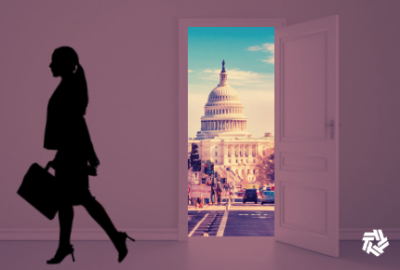

As vaccine distribution plays out slowly across the United States, many are pondering what the future of work-life balance will look like for them and their family.
Are you nervous in the civil service? Sick of or grateful for working at home? Ready to send the kids back to “real” school? Or at least somewhere other than the kitchen table? Or is your new lifestyle more good than bad? Would you go back to the old ways if you could?
Depending on which expert you trust, anywhere from 25% to more than 40% of the American workforce are working from home. Many if not most public school students are learning — or not — remotely, usually from home.
Some people like it that way. They say they are more productive and that kids (assuming they get some parental input) are better. And that the stay-at-homes are likely to get or spread COVID-19 to family members. Others say that certain jobs can’t be done properly and effectively from home. And that their children are being denied their right to a good (as in non-Zoom) education. Some who view schools as part educational, part daycare operations, can’t wait for their beloved offspring to go back to the classroom. Families that include teachers who are apparently more vulnerable to the virus than the kids they share-air-with have very mixed emotions.
The federal government, by some accounts, seems to have one of the best pandemic work plans. And it has made serious efforts to vaccinate front-line workers who can’t do their jobs from home. Schools, by contrast, are following a wide and often conflicting array of plans. Some have had students back and forth between their class room and their living room. In some places, governors or state education officials make the school or home-schooling call.
For people who have an interest in what’s next in the work world, what the federal government does is critical. Before the coronavirus hit or was acknowledged, a number of federal agencies had focused on work-for-home operations. As in reducing or eliminating them. Part of it was the drain-the-swamp campaign. Part of it was to spank federal unions that had successfully pushed teleworking programs. And extended union/worker rights with, up-until this time last year, were rent-free quarters in federal buildings. Unions say the efforts were aimed at protecting workers, including nonmembers, and enforcing legitimate contracts. Trump administration officials felt that past teleworking deals, pushed mainly by Democrats in the House, were short-changing taxpayers who pay civil servants salaries. The fact that the leaders, and many local leaders, of all the federal/postal worker unions endorsed Democrat Joe Biden over Trump probably didn’t help.
Now that their appears to be light at the end of the pandemic tunnel, many operations — from schools to Social Security offices — need to rethink Plan B. Should they go back to the office or schools? And how? And when? With 50 states, there are scores of different plans operating side by side. Or in conflict county-by-county. Figuring out the risk-reward factor is actually rocket science. Plus a big dose of reality and horse-sense.
The government, for a change, may actually lead the way in the stay-home or return-to-office movement. Which could be critical for both society in general, in both the immediate future and for decades to come.
In the past, in both surveys and individual conversations, we talked to or heard from lots of feds about the pros and cons of working from home (no traffic, quality breathing air, etc.) vs. the loss of contact with colleagues (not to mention customers) and the absence of the wisdom-of-the-crowd effect when you are home alone in your nighty or PJs, or watching kids watching their teachers on a screen.
Of all the readers I’ve heard from, I think only a couple have said they want or need to get back to the office to do their jobs properly. And keep their sanity. The vast majority say they don’t want to go back, certainly not under a 5-day at the office week. So what’s going on with you? How are you holding up? Where should Uncle Sam as an employer, and the school systems, as our investment in the future (and sometimes babysitter) go from here?
As I said, most of the comments about working from home have been positive. Like this one from Dixie who earlier told us, “I’ve said from the start, I’m incredibly blessed to have been able to continue working this entire time. It’s been an adjustment to work full time from home but that’s all its been. If I want to go to the grocery store, Costco, a long drive, order out, get my meds, get gas, make a doctor’s appointment – I can do all of it. My employment continues, my insurance continues, my need for KFC at least once a week continues. My sister-in-law lost her position at a tax preparation place because she has an underlying medical condition and what she does requires her to be in the office. I worry about her – savings only lasts so long when you’re not able to put any additional funds in it. We are living in extraordinarily fearful times – for many reasons – and every day I wake up and give my gratefulness for waking up and being able to continue on relatively unscathed. Any issues I may have with this teleworking thing we’re doing – is nothing I can’t get over real quick considering the alternative.”
Stay healthy, safe and strong!
By Amelia Brust
Source: Futility Closet
Copyright © 2024 Federal News Network. All rights reserved. This website is not intended for users located within the European Economic Area.
Mike Causey is senior correspondent for Federal News Network and writes his daily Federal Report column on federal employees’ pay, benefits and retirement.
Follow @mcauseyWFED


